Promote Self-Exploration with Emotion Crafts for Kids
In today's fast-paced world, children often find themselves navigating a whirlwind of emotions. From the giddy highs of joy to the deep lows of sadness, understanding these feelings can be quite a challenge. However, what if we told you that emotion crafts could be the key to unlocking emotional intelligence in kids? These creative activities not only allow children to express themselves but also provide a safe space for self-exploration. By engaging in various crafts, kids can gain a better understanding of their emotions, fostering self-awareness and personal growth in a fun and engaging manner.
Imagine a world where children can articulate their feelings as easily as they can draw a picture. Emotion crafts pave the way for this reality, helping kids connect with their inner selves. Through art, children can visualize their feelings, making it easier for them to communicate what they might otherwise struggle to express in words. It's like giving them a magical toolbox filled with colors, shapes, and textures that they can use to navigate their emotional landscape.
So, how do these crafts work? Each activity is designed with a specific emotion in mind, allowing children to dive deep into their feelings. For instance, a simple collage of happy faces can prompt kids to reflect on what brings them joy, while a sadness jar encourages them to confront and document their feelings of sadness. By engaging in these projects, children not only learn to recognize their emotions but also develop the skills to express them constructively.
Incorporating emotion crafts into your child's routine can be a transformative experience. Not only do these activities promote creativity, but they also serve as a bridge to emotional literacy. As children engage with their feelings through art, they build resilience and empathy, essential skills that will benefit them throughout their lives. It's not just about creating something beautiful; it's about creating a deeper connection with themselves and the world around them.
In the following sections, we will explore specific craft ideas tailored to various emotions, discuss the benefits of these activities, and provide tips for parents and educators to facilitate this enriching experience. Get ready to embark on a colorful journey of self-discovery and emotional growth!
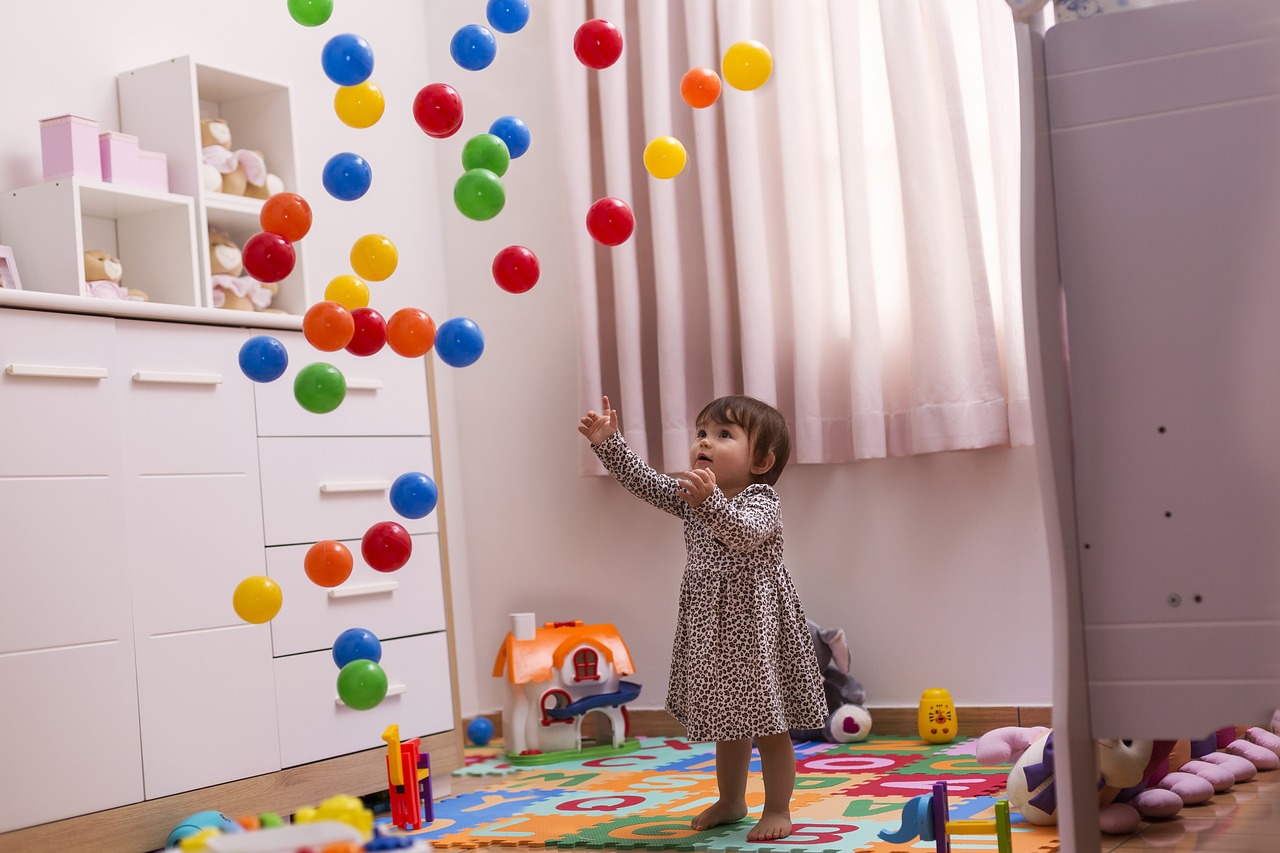
Understanding Emotions Through Art
Art is not just about colors and shapes; it’s a powerful tool for children to explore their emotions in a safe and engaging way. When kids create art, they’re not only expressing themselves but also navigating the complex landscape of their feelings. Have you ever noticed how a simple drawing can tell a story? That’s because art allows children to articulate their emotions without the constraints of language. It’s like opening a window to their inner world!
Through creative expression, children can identify and make sense of their feelings. For instance, when they paint a picture of a sunny day, they might be expressing joy, while dark colors could signify sadness or frustration. This exploration helps them develop emotional literacy, which is crucial for understanding themselves and others. So, how does this process work? Here are a few ways art facilitates emotional understanding:
- Visual Representation: Kids can visualize their feelings through colors and shapes, making abstract emotions more tangible.
- Safe Expression: Art provides a non-verbal outlet for children to express feelings they may struggle to articulate.
- Reflection: Creating art encourages kids to reflect on their emotions, promoting self-awareness and mindfulness.
Moreover, engaging in art activities can significantly boost a child’s self-esteem. When they see their creations come to life, it instills a sense of accomplishment and pride. This is especially important when children face challenges in expressing their emotions verbally. By picking up a brush or crafting with clay, they can communicate their feelings in a way that feels natural and fulfilling.
In a world where emotional intelligence is becoming increasingly vital, incorporating art into a child's routine is a fantastic way to nurture their emotional growth. Just like a garden needs sunlight and water to flourish, children need opportunities to explore and express their emotions. Art can be that nourishing element, providing a fertile ground for emotional development.
So, next time you sit down with a child, consider pulling out some art supplies. Whether it's drawing, painting, or crafting, you’ll be surprised at how much they can reveal about their inner world. Remember, the goal isn’t to create a masterpiece but to facilitate a journey of self-exploration and understanding. Are you ready to dive into the colorful realm of emotions through art?

Craft Ideas for Different Emotions
When it comes to helping children navigate their emotions, crafts can be a powerful tool. Each craft idea is designed not just as a fun activity, but as a gateway to self-discovery and emotional expression. By engaging in these creative projects, children can identify their feelings in a tangible way, making it easier for them to articulate what they’re experiencing. Let's dive into some fantastic craft ideas tailored to specific emotions that will not only spark creativity but also promote emotional literacy.
Happy Faces Collage is a delightful project that allows children to visualize joy. To create this collage, kids can cut out pictures from magazines or draw their own happy faces. They can decorate the collage with bright colors and stickers, reflecting on what makes them feel happy. This craft encourages them to think about joyful moments and share those experiences with others. It’s like creating a personal happiness gallery that can be displayed at home, reminding them of the good times and the things that bring them joy.
On the flip side, the Sadness Jar is a poignant craft that helps children acknowledge their feelings of sadness. In this activity, children can write down notes about what makes them feel sad and place them in a jar. This simple act of writing can be incredibly cathartic, allowing kids to confront their emotions head-on. Once the jar is filled, they can revisit it and reflect on those feelings, perhaps even discussing them with a trusted adult. This process not only helps in expressing sadness but also teaches children that it's okay to feel down sometimes.
Another engaging craft is the Anger Volcano. Children can create a small volcano using clay or paper mache, and then use baking soda and vinegar to simulate an "eruption." As they watch the volcano bubble and overflow, they can discuss what makes them feel angry and how they can manage that anger constructively. This craft serves as a metaphor for releasing pent-up emotions, showing kids that it's natural to feel angry but important to find healthy ways to express it.
Additionally, the Fear Monster craft allows children to personify their fears. Kids can create a monster using various craft materials like felt, googly eyes, and yarn, giving it a name that represents their fear. This creative exercise helps demystify their fears, making them less intimidating. By visualizing their fears as a monster, children can discuss how to confront and overcome them, fostering resilience and courage.
Finally, the Gratitude Tree is a wonderful way for children to express feelings of gratitude. Using a large piece of paper, they can draw a tree and add leaves made from colorful paper, each inscribed with something they are thankful for. This craft not only boosts positivity but also encourages children to reflect on the good things in their lives, reinforcing the importance of gratitude in emotional well-being.
These crafts are just a few examples of how creative activities can help children explore and express their emotions. By engaging in such projects, kids not only develop their artistic skills but also gain valuable insights into their emotional landscape. The beauty of these crafts lies in their ability to turn abstract feelings into concrete expressions, paving the way for deeper self-awareness and emotional growth.

Happy Faces Collage
The is not just a craft; it’s a vibrant journey into the heart of joy! Imagine your child surrounded by an explosion of colors and smiles, piecing together a visual representation of happiness. This craft allows children to tap into their inner joy, reflecting on what truly makes them happy. But how does it work? By creating a collage, kids are encouraged to think deeply about the moments, people, and activities that bring them joy, making it a fantastic exercise in self-exploration.
To start this delightful project, gather a variety of materials. You can use colored paper, magazines, stickers, and even fabric scraps. The idea is to give children the freedom to express themselves creatively. As they cut out pictures and shapes that resonate with their feelings, they are not just crafting; they are engaging in a therapeutic process that promotes emotional awareness. For instance, a child might choose a picture of their favorite ice cream or a family photo from a joyful outing. Each piece they add to the collage tells a story, a snapshot of happiness captured in time.
As the collage begins to take shape, it becomes a beautiful representation of their emotions. Encourage your child to talk about their choices. Ask them questions like, "What does this picture mean to you?" or "Why does this memory make you smile?" Such conversations can deepen their understanding of happiness and help them articulate their feelings more clearly. This is where the magic happens—through discussion, children can learn to connect their experiences with their emotions, enhancing their emotional literacy.
Once the collage is complete, hang it up somewhere visible. This not only serves as a reminder of the joyful moments in their life but also acts as a conversation starter with friends and family. It’s a wonderful way to share happiness and foster connections. Plus, every time they look at it, they’ll be reminded of the things that bring them joy, reinforcing positive feelings and boosting their self-esteem.
In essence, the Happy Faces Collage is more than just a craft; it’s a powerful tool for emotional exploration and expression. It teaches children that it’s okay to feel happy and to celebrate those feelings. So gather those materials, unleash the creativity, and watch as your child transforms their joy into a beautiful masterpiece!
- What age group is suitable for the Happy Faces Collage?
This activity is great for children aged 4 and up, as younger kids can enjoy the process with help, while older kids can engage in more complex discussions about their emotions. - What materials do I need for this craft?
You will need colored paper, magazines, scissors, glue, and any decorative items like stickers or fabric scraps that your child would like to use. - Can this activity be done in a group setting?
Absolutely! In a group setting, children can share their collages and discuss their happy moments, fostering a sense of community and emotional sharing.

Sadness Jar
The is a simple yet profound craft that helps children confront and articulate their feelings of sadness. Imagine a colorful jar filled with little notes, each one representing a moment or a thought that brings about a frown. This craft not only encourages kids to acknowledge their emotions but also provides a safe space for them to express what might be difficult to say out loud. By writing down their feelings, children learn that it's okay to feel sad, and that those feelings can be transformed into something tangible.
To create a Sadness Jar, all you need are a few basic materials: a jar (any size will do), colorful paper, and pens or crayons. Children can decorate their jars with stickers or drawings, making it a personal project that reflects their personality. Once the jar is ready, they can start writing down things that make them sad, whether it's losing a toy, a friend moving away, or even feeling left out during playtime. Each note serves as a stepping stone towards understanding their emotions better.
As kids fill their jars, they can revisit these notes whenever they feel overwhelmed by sadness. This act of reflection can be incredibly cathartic. They might even find patterns in what makes them sad, which can lead to deeper discussions about feelings with parents or educators. It’s like having a conversation with oneself, allowing them to process emotions in a constructive way. Not only does this craft promote emotional literacy, but it also fosters resilience, teaching kids that sadness is a natural part of life that can be managed.
Furthermore, parents and educators can use the Sadness Jar as a conversation starter. After a child has filled their jar, they can be encouraged to share some of the notes with a trusted adult. This sharing creates an opportunity for meaningful dialogue about feelings, helping kids feel validated and understood. The Sadness Jar is not just a craft; it’s a tool for emotional growth, helping children navigate the complexities of their emotions in a supportive environment.
- What age group is the Sadness Jar suitable for? The Sadness Jar can be suitable for children aged 5 and up, as long as they can write or express their feelings verbally.
- How can I encourage my child to use the Sadness Jar? Encourage your child to use the jar regularly, especially during times of emotional distress. You can also lead by example by sharing your own feelings.
- Can the Sadness Jar be used for other emotions? Absolutely! While it focuses on sadness, you can adapt the concept to create jars for other emotions like joy, anger, or fear.
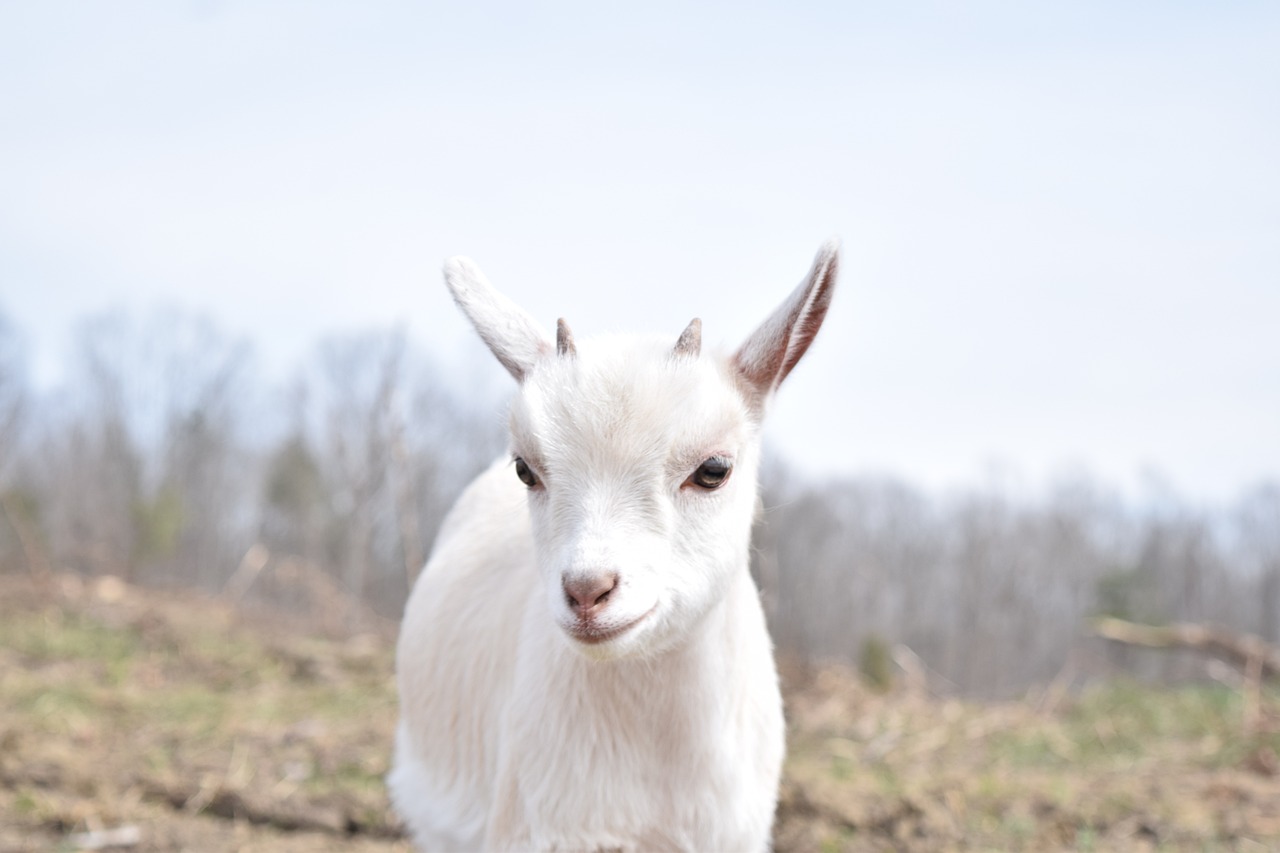
Incorporating Storytelling with Crafts
When it comes to helping children explore their emotions, combining storytelling with crafts can be a game changer. Think of storytelling as a bridge that connects the imaginative world of children with the realities of their feelings. By weaving narratives into creative activities, kids not only express themselves but also develop a deeper understanding of their emotions. Imagine a child crafting a colorful storybook while simultaneously creating characters that represent different feelings—this dual approach allows them to visualize their emotional landscape.
One effective way to incorporate storytelling is through the use of emotion-based narratives. For instance, children can create puppets that embody various feelings, such as joy, anger, or sadness. As they craft these puppets, they can also develop short stories about each character's journey. This not only encourages creativity but also fosters empathy, as kids learn to see the world through different emotional lenses. The act of storytelling allows them to articulate their feelings in a safe and imaginative space.
Moreover, storytelling can be enhanced through collaborative projects. For example, a group of children can collectively create a large mural that tells a story about friendship, overcoming challenges, or celebrating diversity. Each child can contribute their own section, which represents their unique perspective and emotional experience. As they work together, they engage in discussions that deepen their understanding of each other's feelings, promoting a sense of community and shared emotional growth.
Additionally, you can introduce story prompts that guide children in their craft activities. Here are a few examples:
- “Create a character that represents your happiest memory.”
- “Make a scene that shows how you feel when you’re angry.”
- “Design a story about a brave character who learns to cope with sadness.”
These prompts not only spark creativity but also encourage children to reflect on their own emotions in a constructive way. As they craft their stories, they can share their thoughts and feelings with peers or family members, facilitating open conversations about emotions. This practice of sharing not only enhances their emotional vocabulary but also builds a supportive environment where they feel safe to express themselves.
In summary, incorporating storytelling with crafts transforms the way children explore their emotions. It allows them to express their feelings creatively, understand different perspectives, and engage in meaningful conversations. By embracing this approach, we equip children with the tools they need to navigate their emotional worlds, fostering resilience and empathy along the way.
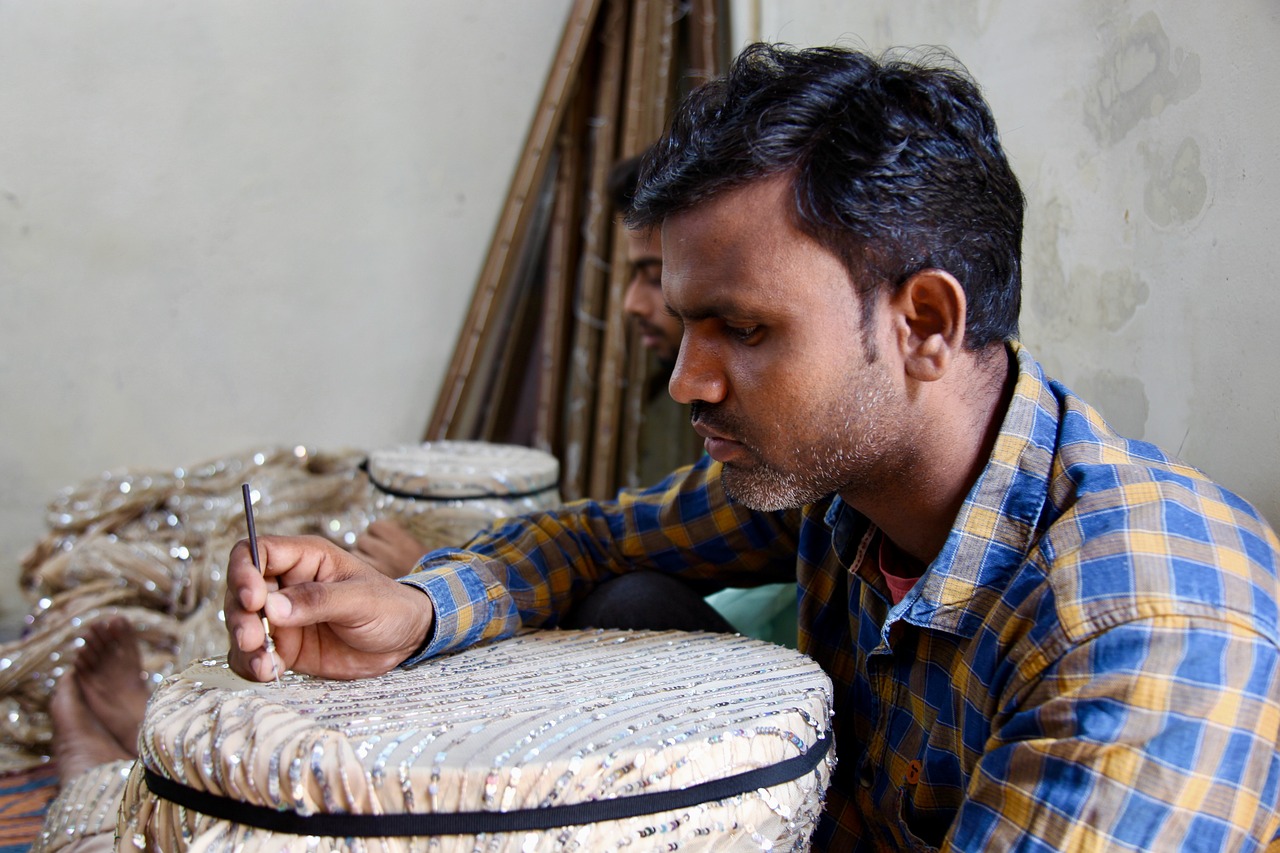
Group Activities for Emotional Sharing
Group activities are a fantastic way for children to engage in emotional sharing, creating a safe space where they can express themselves freely. When kids come together, they not only learn from each other but also build a sense of community and empathy. Imagine a vibrant tapestry woven from the threads of various emotions—each child contributing their unique experiences and feelings. This is what happens in group settings, where emotional sharing becomes a collective journey of discovery.
One of the most effective ways to promote emotional sharing is through collaborative crafts. These activities encourage children to communicate their feelings while working together towards a common goal. For instance, consider a project where kids create a large mural that represents their emotions. Each child can paint or draw a symbol that represents how they feel, and as they work side by side, they can discuss their choices. This not only fosters creativity but also opens up dialogues about emotions, allowing children to validate and understand each other's feelings.
Another engaging group activity is Emotion Charades. This playful game allows kids to act out different emotions without using words, while their peers guess what they are expressing. It’s a delightful way to enhance emotional literacy, as children learn to recognize and interpret various feelings through body language and facial expressions. Plus, it adds an element of fun that keeps everyone involved! The laughter and excitement that come from this game help break down barriers, making it easier for kids to talk about their feelings openly.
To further enrich these group activities, consider incorporating a Feelings Circle. In this setting, children can sit in a circle and take turns sharing something that makes them feel happy, sad, or even angry. This simple yet powerful practice not only encourages active listening but also fosters a sense of trust among peers. As they share, children can find common ground, realizing they are not alone in their emotions, which can be incredibly comforting.
In addition to these activities, it’s essential to create an environment that promotes emotional safety. Establishing ground rules for sharing—like respecting each other's feelings and keeping discussions confidential—can help children feel secure. This way, they can express themselves without fear of judgment, making emotional sharing a natural part of their group experience.
Ultimately, the goal of these group activities is to cultivate emotional intelligence and empathy among children. By engaging in shared experiences, they learn to appreciate the feelings of others, fostering a sense of community that can last a lifetime. As they navigate their emotions together, they not only grow as individuals but also as compassionate members of society.
Q1: How can I encourage my child to participate in group emotional activities?
A1: Start by introducing simple activities at home, such as family feelings discussions or creative projects. Highlight the fun aspects to spark their interest, and gradually encourage them to join group activities at school or community centers.
Q2: What if my child is shy and reluctant to share their feelings?
A2: It's important to respect their pace. You can encourage them by sharing your feelings first or using creative outlets like drawing or writing to express emotions. Over time, they may feel more comfortable sharing in a group.
Q3: Are there specific age-appropriate activities for younger children?
A3: Yes! Activities like storytelling, puppet shows, or simple crafts are great for younger kids. They can express emotions through characters, which can help them articulate their feelings in a fun and engaging way.

Emotion Charades
Emotion Charades is not just a game; it’s a delightful way for children to dive into the world of feelings while having a blast! Imagine a room filled with laughter as kids take turns acting out various emotions without uttering a single word. This interactive activity not only breaks the ice but also creates a safe space for children to express themselves. It’s like a fun-filled emotional workout that sharpens their ability to recognize and articulate feelings.
How does it work? Well, it’s simple! First, gather a group of kids and provide them with a set of emotion cards. Each card features a different emotion, such as happiness, anger, surprise, or fear. One child picks a card and acts out the emotion while the others guess what it is. This game encourages kids to think critically about body language and facial expressions, helping them to connect the dots between physical cues and emotional states.
To make it even more engaging, you can set up a little scoreboard to track how many guesses each child gets right. This adds a layer of friendly competition and keeps everyone on their toes! Plus, it’s a fantastic way to enhance their observational skills. They learn to pay attention not only to the actor but also to their peers, fostering empathy and understanding.
Here’s a quick overview of how to set up Emotion Charades:
| Step | Description |
|---|---|
| 1 | Gather a group of children and explain the rules. |
| 2 | Create emotion cards or print out a list of emotions. |
| 3 | Have one child pick a card and act out the emotion. |
| 4 | Allow others to guess the emotion being portrayed. |
| 5 | Switch roles and repeat! |
Emotion Charades is not only entertaining but also educational. It helps children build their emotional vocabulary and understand that it’s okay to feel a wide range of emotions. By acting out feelings, they learn that emotions are universal; everyone experiences them, and they can be expressed in many ways. This game also sparks conversations about feelings, allowing kids to share their own experiences and thoughts in a lighthearted manner.
Incorporating games like Emotion Charades into your activities can significantly enhance children’s emotional intelligence. So, the next time you’re looking for a fun way to engage kids, consider this lively game. It’s a fantastic blend of play and learning, and it might just open up a whole new world of emotional understanding!
- What age group is suitable for Emotion Charades? Emotion Charades can be played by children aged 4 and up, making it a versatile game for various age groups.
- How can I modify the game for younger children? For younger kids, simplify the emotions to basic feelings like happy, sad, and angry, and provide visual aids to help them understand.
- Can this game be played in larger groups? Absolutely! The more, the merrier! Just ensure everyone gets a turn to act out and guess.
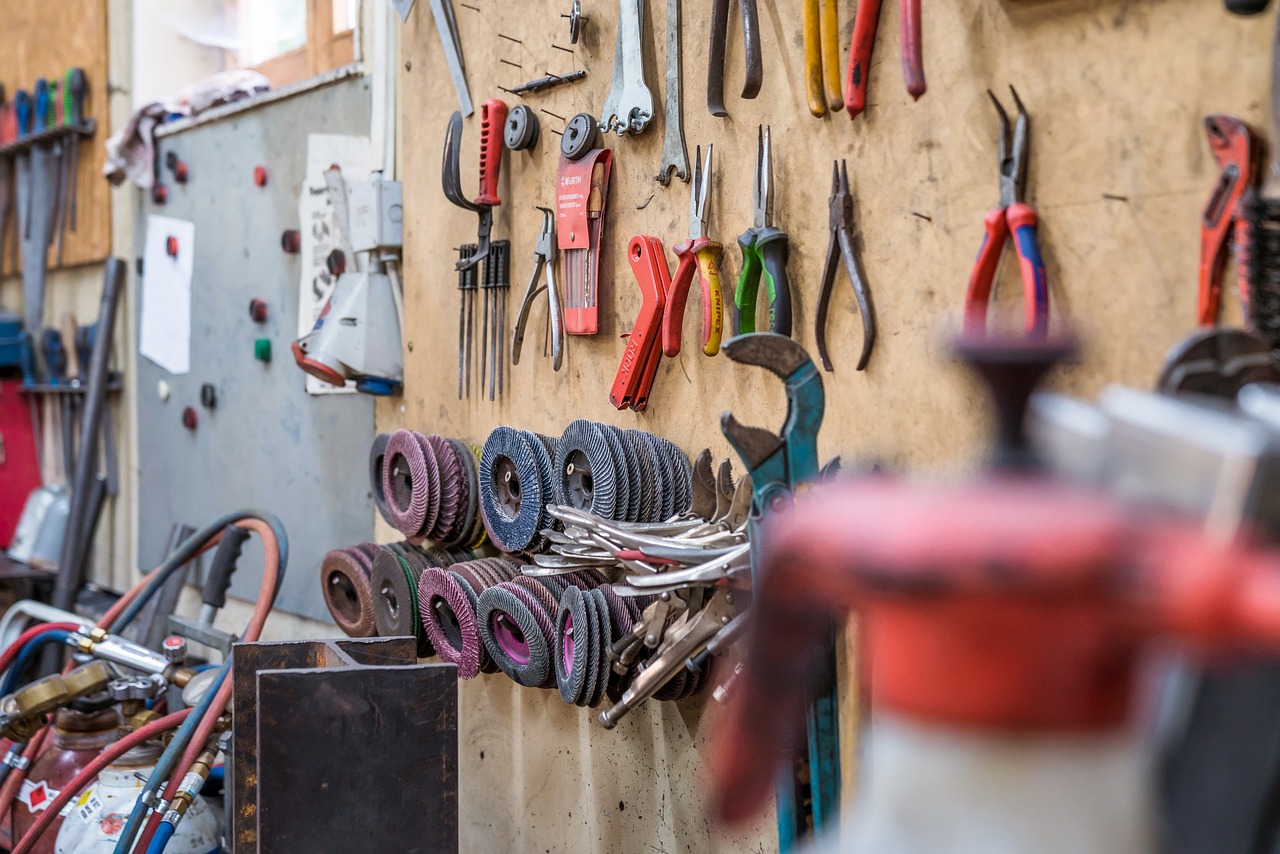
Feelings Mural
Creating a is not just a fun activity; it’s an incredible way for children to express their emotions in a collective setting. Imagine a large canvas where every child can contribute their unique feelings through art. This project transforms a simple wall into a vibrant tapestry of emotions, showcasing the beauty of shared experiences. As kids work together, they not only learn to express their own feelings but also gain a better understanding of their peers' emotions.
To start, gather materials such as large sheets of paper, paints, markers, and any other art supplies you have on hand. Encourage the children to think about different feelings they experience. You might ask them questions like, “What color represents happiness?” or “How does sadness look in your mind?” This prompts them to dig deep into their emotional vocabulary and visualize these feelings creatively.
As they create, children can work individually or in small groups, discussing their thoughts and feelings as they go. This collaborative process fosters teamwork and allows for emotional sharing. For example, one child might choose to paint a sun to represent joy, while another may depict rain to symbolize sadness. Through this interaction, they learn that it’s okay to feel a range of emotions, and that others may feel similarly.
Once the mural is complete, take time to reflect on the artwork. Gather the children around and invite them to share their contributions. This sharing session can be incredibly powerful, as it allows kids to articulate their feelings and understand that they are not alone in their emotions. It’s a moment of validation and connection that can strengthen friendships and build empathy.
Incorporating a feelings mural into your routine not only enhances emotional literacy but also creates a safe space for children to express themselves. It’s a reminder that every emotion is valid and worthy of expression. Plus, the finished mural can be displayed in a common area, serving as a constant reminder of the importance of emotional awareness and expression.
- What materials do I need for a feelings mural?
You’ll need large sheets of paper, paints, markers, and any other art supplies like stickers or magazines for collage work. - How do I encourage children to express their feelings?
Ask open-ended questions about their emotions and provide prompts related to colors and images that represent those feelings. - Can this activity be done indoors or outdoors?
Yes! Depending on the space available, you can create the mural on a wall indoors or even on a large sheet of paper outdoors. - What age group is this activity suitable for?
The feelings mural can be adapted for various age groups, from preschoolers to older children, with varying levels of complexity in the art they create.
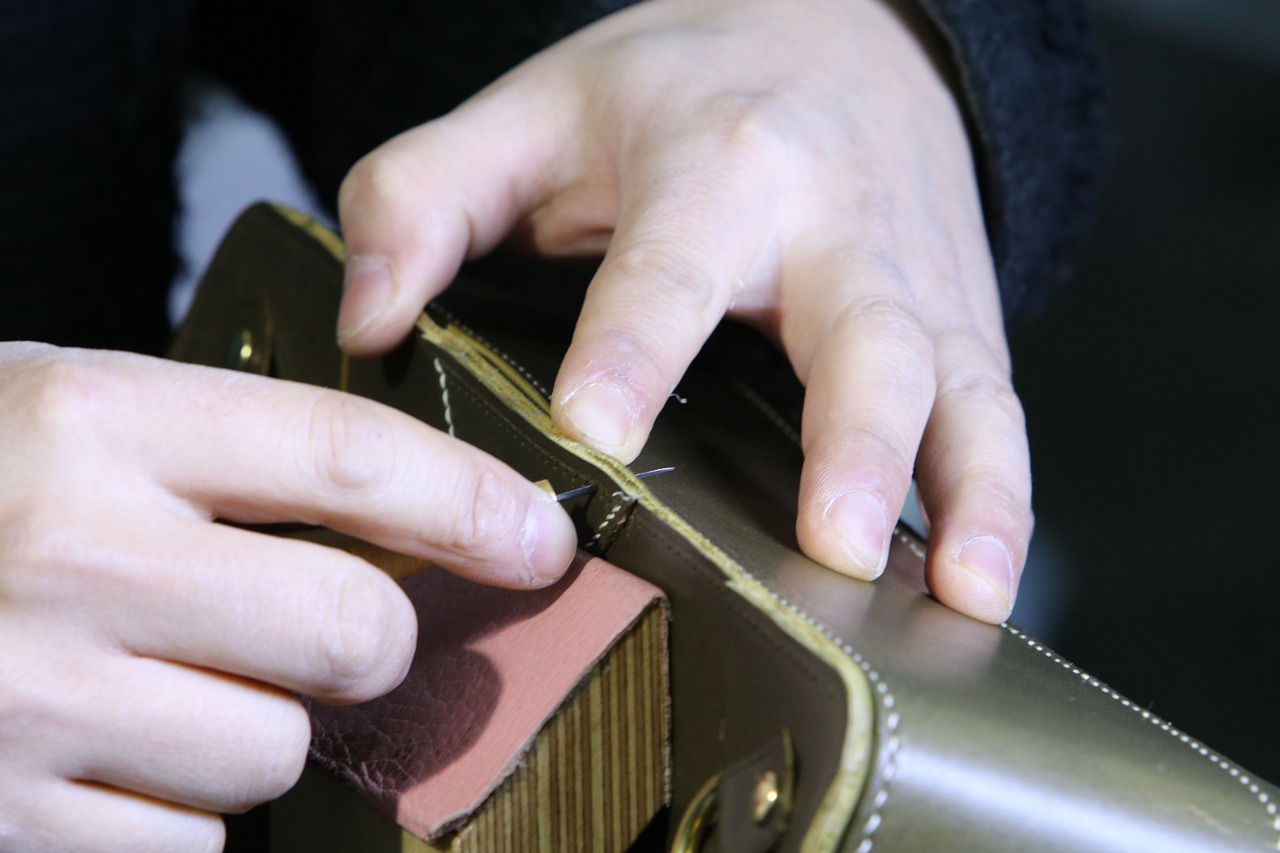
Benefits of Emotion Crafts
Engaging in emotion crafts offers a multitude of benefits that go beyond mere creativity. These activities are not just about making something beautiful; they play a crucial role in enhancing children's mental health and emotional well-being. When children participate in crafting projects that focus on their feelings, they learn to express themselves in ways that words often cannot capture. This form of expression is vital, as it allows them to communicate their emotions, whether they are feeling happy, sad, or even angry.
One of the most significant advantages of emotion crafts is the development of emotional intelligence. Through these activities, children learn to recognize and label their feelings, which is the first step in understanding them. For instance, when creating a Sadness Jar, a child might reflect on instances that make them feel down, allowing them to confront their sadness instead of bottling it up. This process not only validates their emotions but also teaches them that it's okay to feel sad sometimes. By engaging in such crafts, children can enhance their emotional literacy, which is essential for navigating social interactions and building healthy relationships.
Additionally, emotion crafts can significantly boost a child's self-esteem. When children create something that resonates with their feelings, they gain a sense of accomplishment. This sense of achievement can be particularly empowering, especially when they share their creations with others. For example, a Happy Faces Collage can serve as a visual reminder of joyful moments, reinforcing positive emotions and encouraging children to seek out happiness in their daily lives. The act of creating something personal fosters a sense of ownership and pride in their feelings.
Moreover, these crafts offer an excellent opportunity for parent-child bonding. When parents or educators join children in these creative activities, it opens up a dialogue about emotions, providing a safe space for kids to share their thoughts and feelings. This interaction not only strengthens relationships but also models healthy emotional expression for children. They see firsthand how to communicate feelings through art, which they can carry into their lives outside of crafting.
Finally, emotion crafts can also facilitate social skills development. When children work together on group projects, such as a Feelings Mural, they learn to collaborate, share, and empathize with their peers. This shared experience fosters a sense of community and belonging, which is essential for emotional well-being. As children discuss their feelings and experiences, they also learn to listen and respect the emotions of others, laying the groundwork for strong interpersonal skills.
In summary, the benefits of emotion crafts extend far beyond the creative process. They provide a rich tapestry of opportunities for children to grow emotionally, socially, and personally. By integrating these crafts into their lives, children can develop the skills necessary to navigate their emotions and the world around them with confidence and compassion.
- What age group is suitable for emotion crafts?
Emotion crafts can be adapted for various age groups, typically starting from preschoolers to pre-teens. The complexity of the craft can be adjusted based on the child's developmental stage. - How can I encourage my child to express their emotions through crafts?
Start by introducing simple projects that focus on specific emotions. Encourage open discussions about feelings and provide a supportive environment where your child feels safe to express themselves. - Are there any specific materials needed for emotion crafts?
No specific materials are required; common crafting supplies like paper, markers, glue, and scissors can be used. The focus should be on the child's expression rather than the materials. - Can emotion crafts be used in schools?
Absolutely! Many educators incorporate emotion crafts into their curriculum to promote emotional literacy and social skills among students.
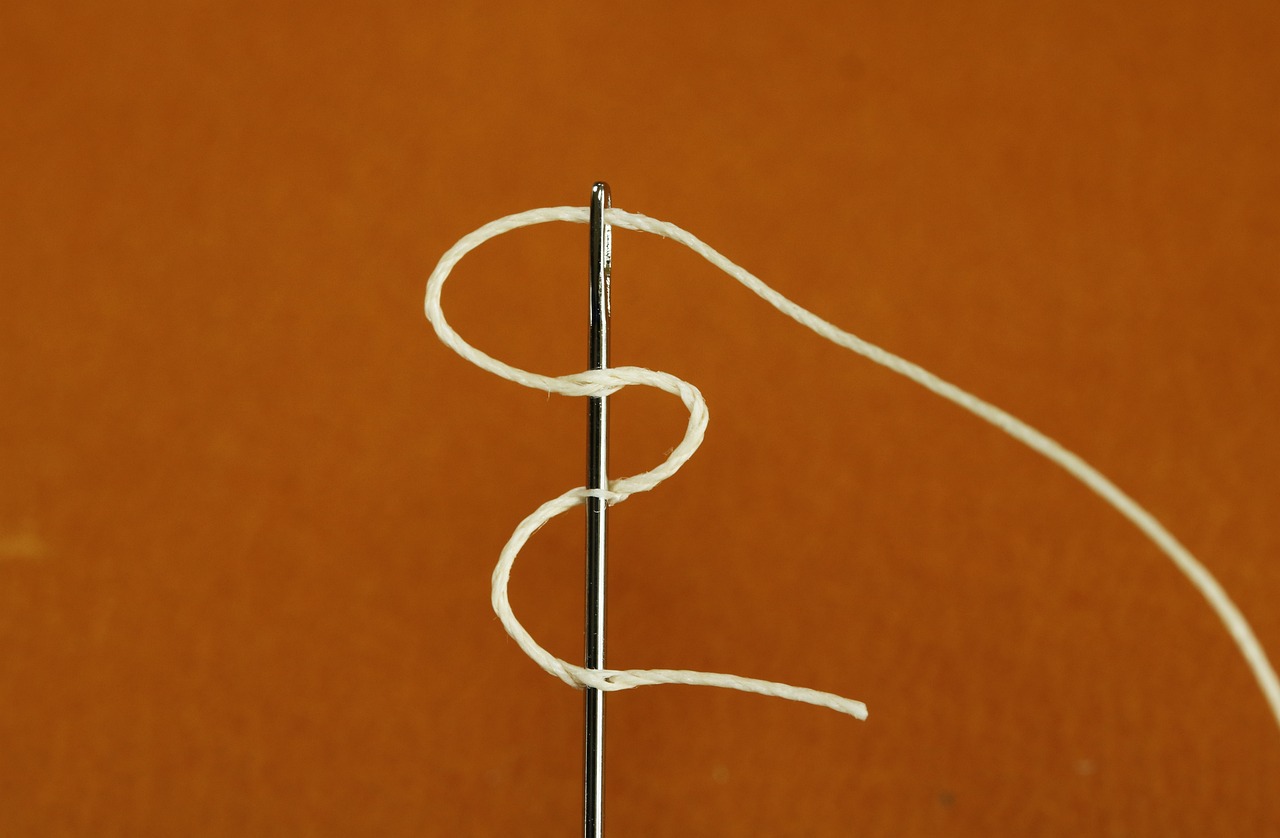
Tips for Parents and Educators
When it comes to fostering emotional exploration through crafts, parents and educators have a pivotal role to play. The journey of helping children navigate their feelings can be both rewarding and challenging, and a little guidance can go a long way. Here are some valuable tips to ensure that the experience is enriching and enjoyable for everyone involved.
First and foremost, it's essential to create a safe and supportive environment where children feel comfortable expressing their emotions. Let them know that all feelings are valid. This can be achieved by encouraging open discussions about emotions before diving into the crafts. Ask them questions like, "What makes you happy?" or "Can you think of a time you felt sad?" This not only warms them up to the idea but also sets the stage for deeper emotional exploration.
Next, consider integrating emotion crafts into everyday routines. For instance, you could set aside a specific day each week dedicated to emotional crafting. This consistency helps children anticipate and look forward to these activities, making emotional expression a regular part of their lives. You might even create a special "emotion corner" in your home or classroom filled with art supplies, where kids can go whenever they feel the need to create.
Additionally, it's important to tailor the crafts to suit the individual needs of each child. Some kids might thrive with painting, while others may prefer writing or sculpting. Understanding their preferences can make a significant difference in how they engage with the materials. If a child is particularly shy, consider starting with less public activities or one-on-one sessions before moving to group crafts.
As you guide children through these activities, remember to ask open-ended questions that prompt deeper reflection. Questions like, "What colors represent your feelings today?" or "Can you describe how you felt while making this?" can help children articulate their emotions more clearly. This conversational approach not only enhances their emotional literacy but also strengthens the bond between the adult and the child.
Moreover, it’s crucial to celebrate their creations. Whether it’s a simple drawing or a complex collage, acknowledging their efforts reinforces the idea that their feelings are important. You might even set up a mini-exhibition at home or in the classroom where children can showcase their work to peers and family members. This not only boosts their self-esteem but also encourages them to share their emotions with others.
Lastly, be patient and flexible. Not every craft will resonate with every child, and that's perfectly okay. If a child seems disinterested or frustrated, consider switching gears or trying a different approach. The goal is to make emotional exploration a positive experience, not a chore. Always remember that the process is just as important as the product, and sometimes the most profound insights come from the simplest activities.
By implementing these tips, parents and educators can effectively nurture emotional awareness in children through engaging and creative crafts. It's about creating lasting memories while equipping kids with the tools they need to understand and express their feelings in a healthy, constructive way.
Q: What age group is best suited for emotion crafts?
A: Emotion crafts can be adapted for various age groups, but they are particularly effective for children aged 3 to 12. Younger children may enjoy simpler crafts, while older kids can engage in more complex projects that require deeper reflection.
Q: How can I encourage my child to express difficult emotions?
A: Start by validating their feelings and providing a safe space for them to share. Use creative prompts or story starters to help them articulate their emotions. Engaging in crafts that focus on specific feelings, like a sadness jar, can also help facilitate this process.
Q: Can emotion crafts be done in a group setting?
A: Absolutely! Group settings can enhance emotional sharing and foster empathy among peers. Activities like creating a feelings mural or playing emotion charades are great ways to engage children in collaborative emotional exploration.
Frequently Asked Questions
- What are emotion crafts?
Emotion crafts are creative activities designed to help children explore and express their feelings. These crafts can include anything from collages to jars filled with notes about emotions, allowing kids to articulate their feelings in a fun and engaging way.
- How can art help children understand their emotions?
Art provides a unique outlet for children to express themselves. Through crafting, kids can visualize their emotions, which helps them recognize and articulate what they are feeling. This process fosters emotional literacy and self-awareness, making it easier for them to communicate their feelings.
- What are some specific craft ideas for different emotions?
There are many craft ideas tailored to specific emotions. For example, a Happy Faces Collage allows kids to reflect on joyful moments, while a Sadness Jar helps them confront feelings of sadness by writing down what makes them feel that way. Each craft serves as a tool for emotional expression and understanding.
- Can storytelling be integrated with emotion crafts?
Absolutely! Combining storytelling with crafts enhances emotional exploration. Kids can create narratives around their crafts, deepening their understanding of their feelings. This integration encourages imaginative play and helps children connect their emotions to stories they can share with others.
- What are the benefits of engaging in emotion crafts?
Engaging in emotion crafts offers numerous benefits, including enhanced emotional intelligence, creativity, and self-esteem. These activities provide a safe space for children to explore their feelings, build empathy, and develop coping skills, which are crucial for their mental health and personal growth.
- How can parents and educators support emotion crafts?
Parents and educators can support emotion crafts by providing the necessary materials and creating a safe, encouraging environment. They can guide children through the crafting process, ask open-ended questions about their feelings, and help facilitate discussions about emotions, ensuring that kids feel comfortable expressing themselves.
- Are group activities beneficial for emotional sharing?
Yes! Group activities, like Emotion Charades or a Feelings Mural, promote emotional sharing among peers. These collaborative projects help children learn from each other, build empathy, and visualize their shared experiences, making emotional exploration a collective journey.



















